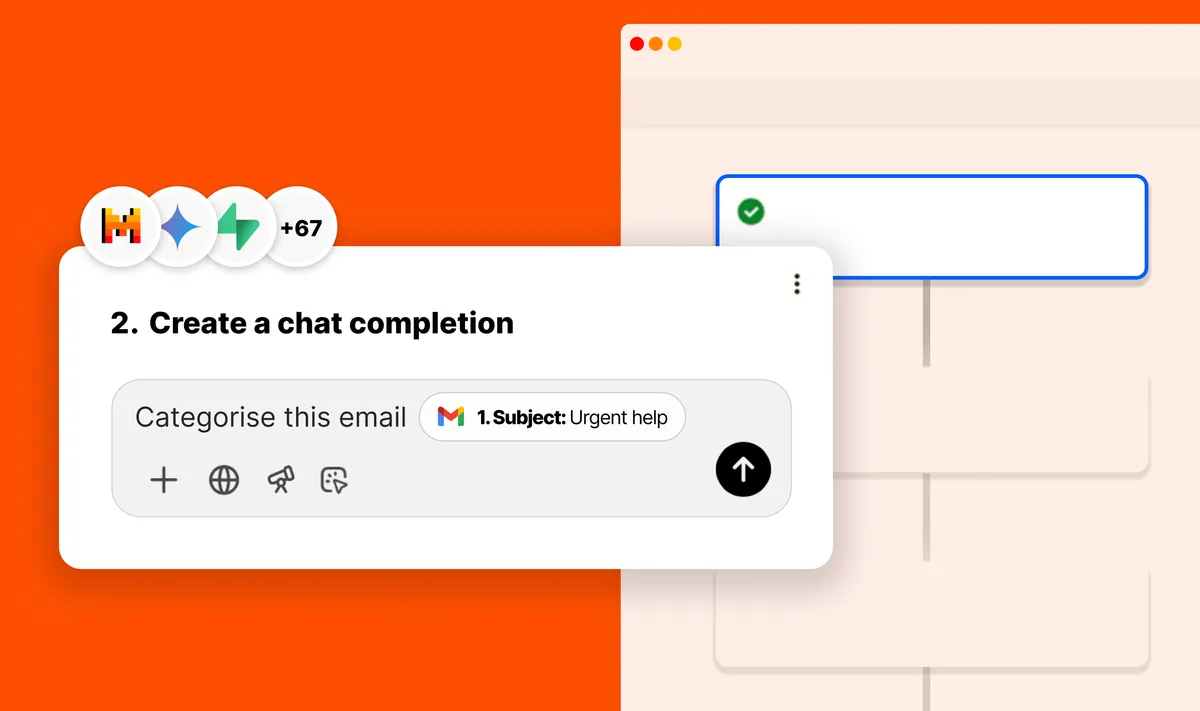Summary
Business Case
A B2B SaaS platform for automators opened up a marketplace for third-party app developers. At the same time, the AI tooling explosion outpaced incumbants’ ability to push dependable apps quickly, leaving builders unable to connect their systems to bleeding-edge AI and other popular SaaS.
My role
Co-founder, Designer, Engineer
- business strategy, sales, and marketing: i sourced missing, in-demand apps to build as new products, then built partnerships with influencers and vendors, and then created educational support content.
- design: i interviewed developers, translated their requirements into intuitive interfaces for them to run CRUD operations visually, and programmatically.
- development: i built and tested ~280 individual javascript actions and triggers for 70+ apps based on their REST API docs. This included custom functions, JSON parsing, RPCs, HTML/CSS and more. I also custom coded an e-commerce shopfront using Vue.js and Tailwind components
User Profile
Developers, Analysts, Operators, Creators building new businesses, or streamlining existing ones; where custom development is too slow-to-market and rigid-to-scale. Instead they seek small, modular, plug-and-play functions they can use to ship confidently under time pressure.

Design Solution
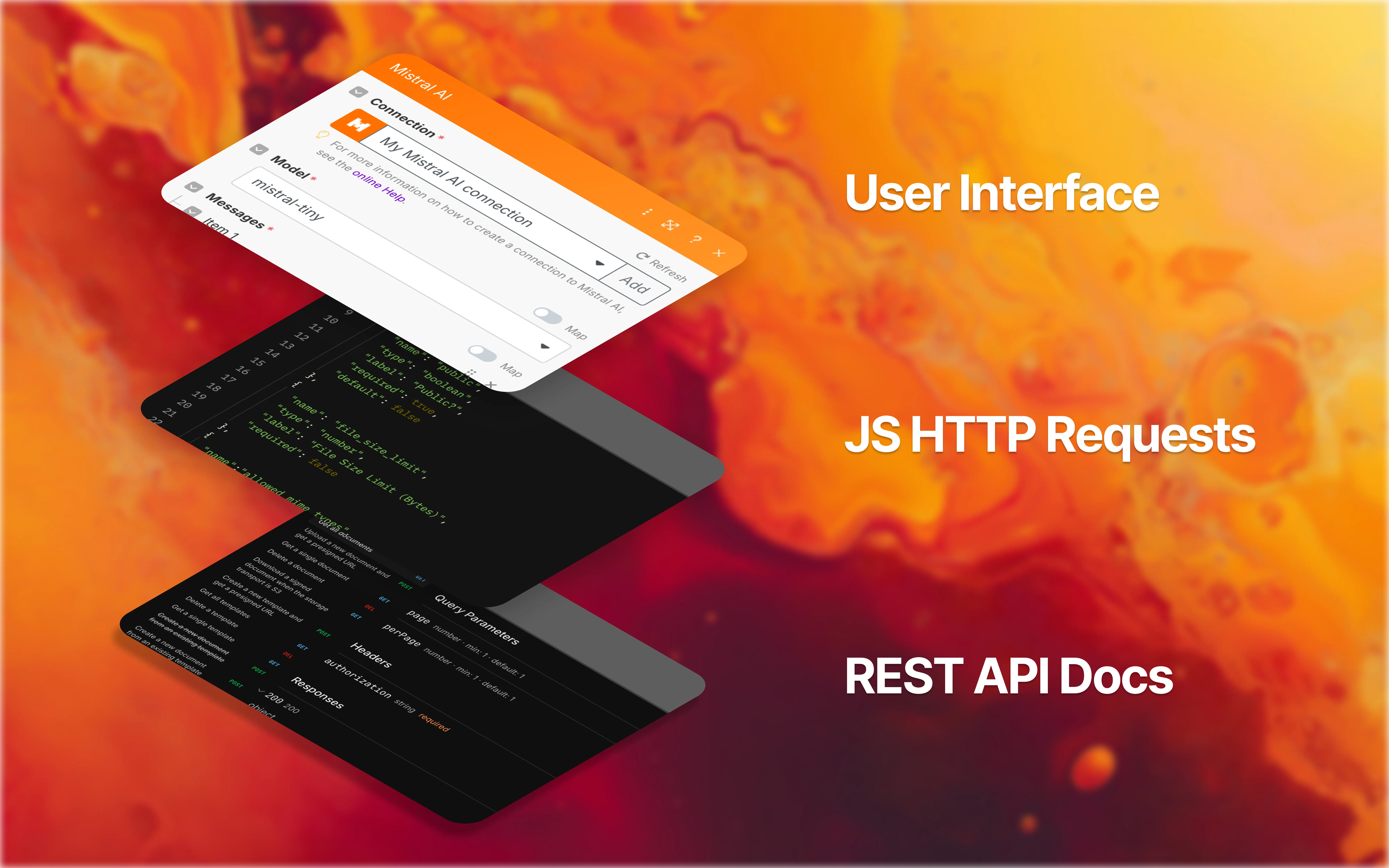
First-Run Success
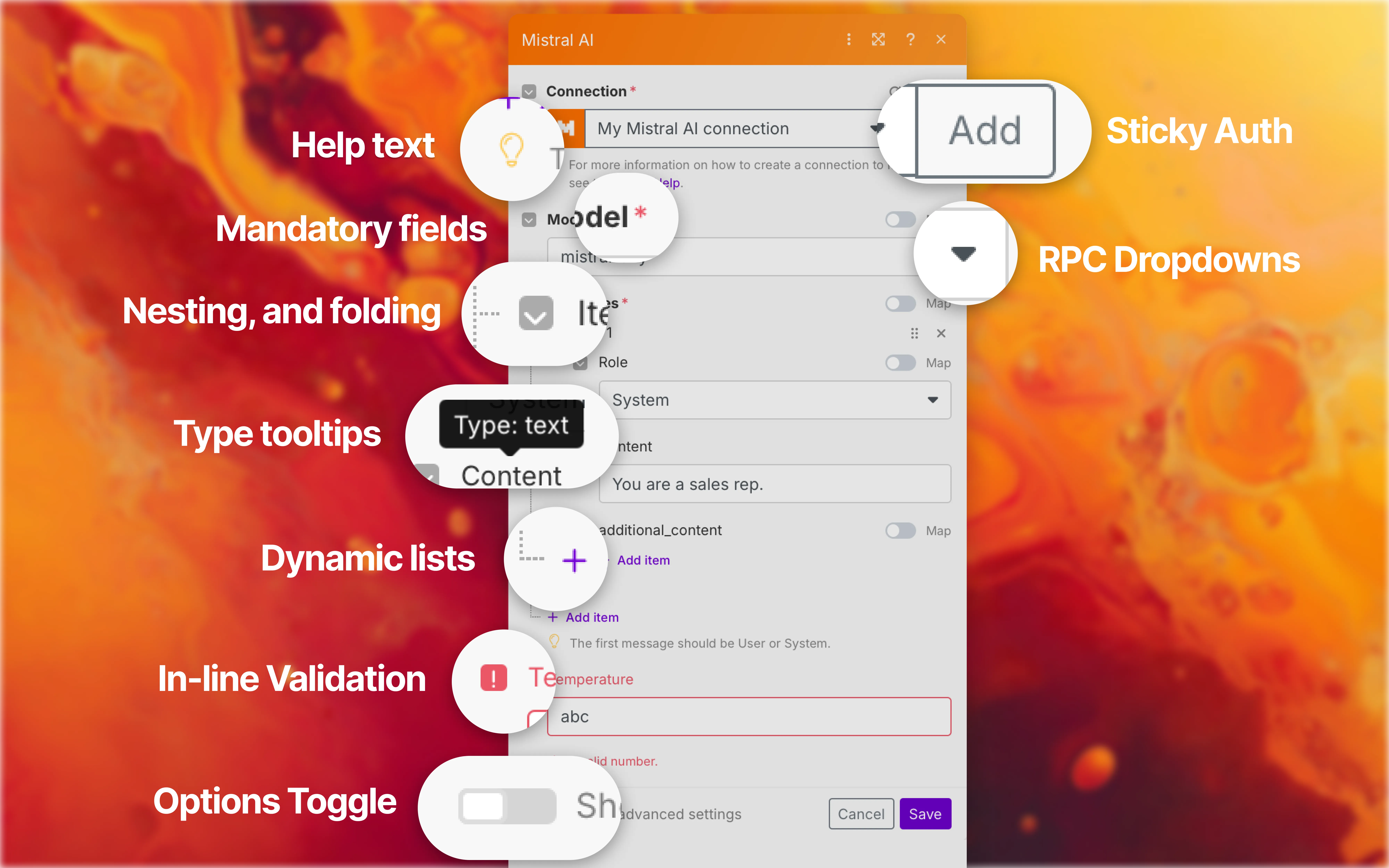 These information-rich input control panels are unique to each action of each app, and help a builder structure their API request for a successful first run.
These information-rich input control panels are unique to each action of each app, and help a builder structure their API request for a successful first run.
Before, Developers had to inherently know the shape of an API request, often pieced together from incomplete, inaccurate, and inconsistent api docs, or otherwise spend time debugging syntax, spelling, and typecasting errors. Now, the experience is as simple as completing a form, and the request is built for them in the background.
Run-Time Resilience & Observability
While we can only set up first run success so much, still is the nature of development to debug and troubleshoot. When things go inevitably wrong, we’ve designed mechanisms that predict like output previews, protect like background rate-handling and response pagination, or else surface the problem like error messaging, in a human friendly way.
Reusable ui components
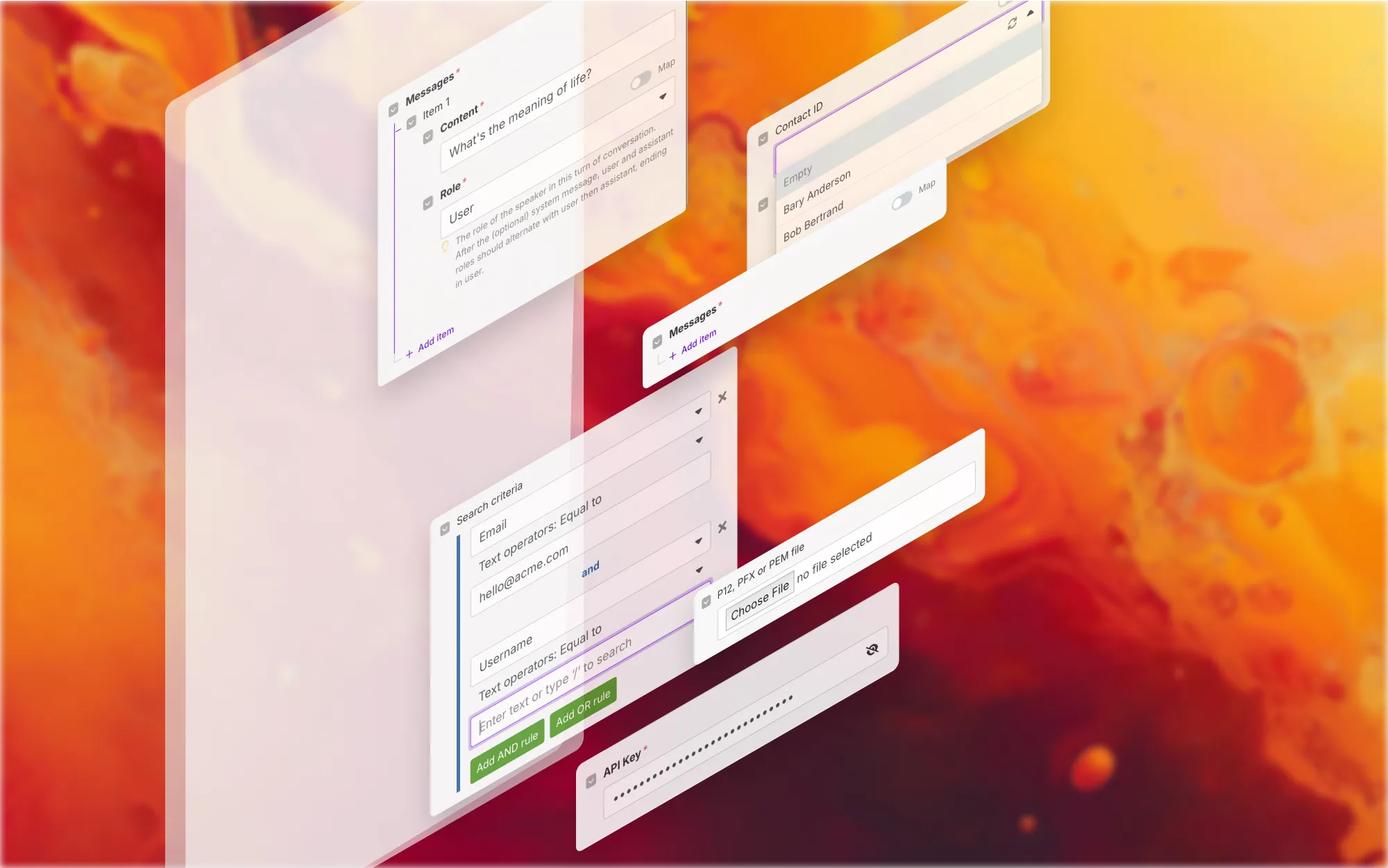 At the atomic level, each apps ‘action panel’ is built from a combination of fields i.e. Dropdowns, checkboxes, radio buttons, text fields, file selectors, lists, and more.
At the atomic level, each apps ‘action panel’ is built from a combination of fields i.e. Dropdowns, checkboxes, radio buttons, text fields, file selectors, lists, and more.
When you consider each app might have a dozen actions; then each action a dozen fields; then each field a dozen different states (active, inactive, error, etc) and properties (label, default, isMandatory, etc) — any, even minor, customisation/inconsistency can cause work to explode exponentially.
To address this, we designed and developed with a component-first approach, where each element is dynamically linked to a master component baked in best practises, which means updating a single component will update them universally.
Validation & Impact
We’re constantly speaking to, measuring, and learning from our users, via in-product analytics, email inboxes and live support calls, which has allowed us to support 3,500+ businesses and powering their 300K active workflows every day.
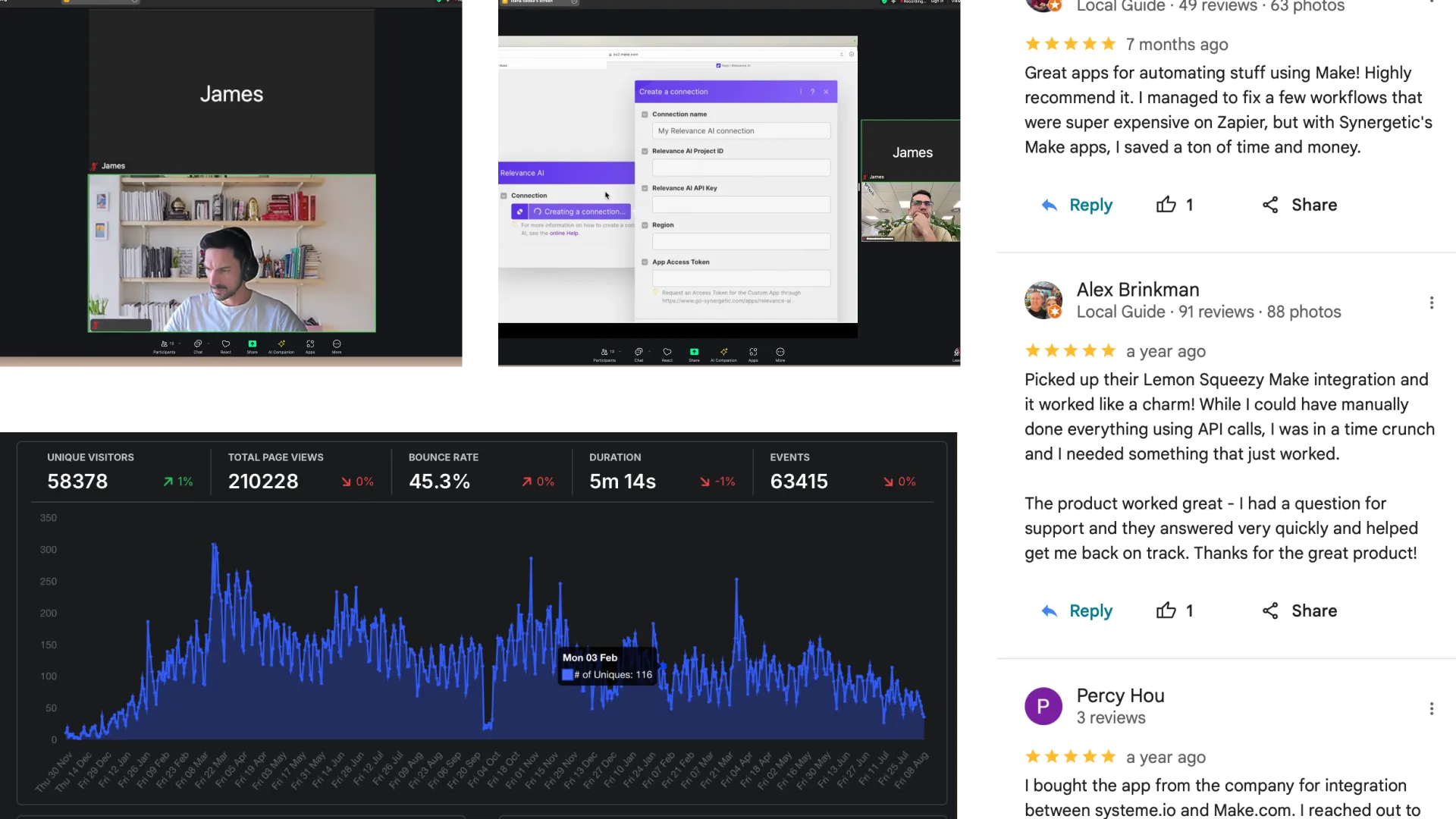
Other impact we’ve had include:
- Partnerships: selected official development partner for brands like Supabase, Mistral, Bland AI, and more
- Recognition: Awarded Development Partner of the Year(2024) by Make.com
- Monetization: by streamlining our development process (7 new apps/month), we were able to capitalise new product lines early (bundles, and lifetime subscriptions), which increased our average cart size by 33%, and now constitute 40% of our total revenue.

